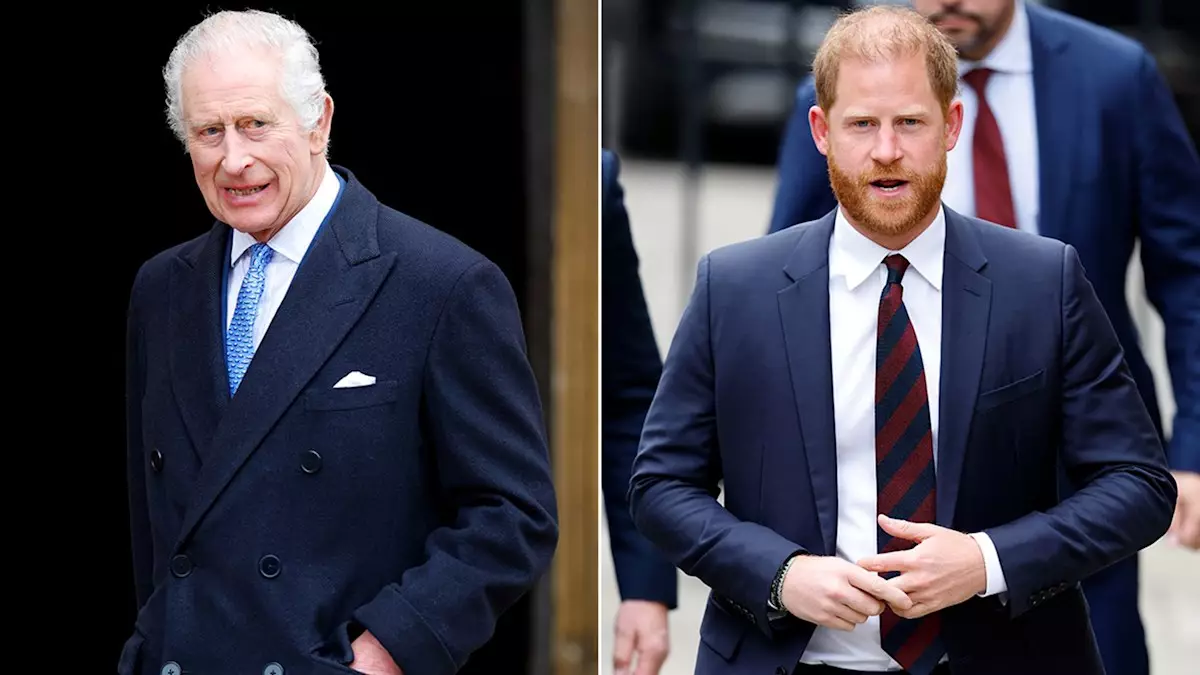In a sober statement released by Buckingham Palace, King Charles and Queen Camilla navigated the tumultuous waters of public speculation regarding Prince Harry’s recent legal defeat concerning security arrangements. This situation has sparked a fervent debate over royal responsibility and familial bonds; Prince Harry’s assertion in a BBC interview that his father maintains “full control” over such matters adds a complex layer to an already intricate family dynamic. The Palace’s response, indicating that legal matters have been exhaustively scrutinized by the courts, effectively closes the door on public expectations for intervention. This tactic reinforces the image of an institution committed to rule of law over personal drama, illustrating the delicate balancing act the royals must perform in public perception.
Yet, one can’t help but reflect on the emotional toll this separation and discord reflect—is institutional integrity truly more valuable than kinship? In today’s world, the hearts of many resonate with Prince Harry’s longing for connection amid the turmoil, asking whether compassion might take precedence over constitutional propriety.
A Royal Canadian Engagement
Adding another layer of complexity to this royal narrative, the announcement of King Charles and Queen Camilla’s upcoming visit to Canada—scheduled for May 26-27—comes at a pivotal time. The couple is set to attend the state opening of the Parliament of Canada, a significant event that illustrates their ongoing commitment to representing the monarchy on foreign soil. The visit was notably postponed due to Charles’s health issues, emphasizing his tenacity to fulfill royal obligations, even in the wake of personal challenges.
The political backdrop for this visit is noteworthy, as it follows the Liberal Party’s recent electoral victory involving Mark Carney, a figure known for his past governance of the Bank of England. Charles and Camilla’s presence could symbolize not just royal endorsement but also a deeper connection to Canada, a country with historical ties to the monarchy. However, how much of this royal engagement serves to distract from their troubled familial affairs remains up for debate. Is this trip merely a public relations move to rehabilitate their image amidst Harry’s familial turbulence?
The Echoes of Familial Fracture
Prince Harry’s interview struck a chord, showcasing his yearning for reconciliation within a fractured family. His words, “Life is precious, I don’t know how much longer my father has,” encapsulate a profound emotional undercurrent. By opening this dialogue about mortality, Harry emphasizes the urgency of connection, challenging us to reconsider what we value more: blood ties or the rigid adherence to tradition?
Furthermore, his mention of longstanding disagreements contrasts sharply with the public facade of royal unity. This acknowledgment that they stand at an impasse due to safety concerns highlights the evolving landscape of royal privilege and the distance this creates within familial relationships. Does the need for protection, perhaps even a reasonable demand from Harry, justify the actions taken by the royal family, or does it expose their inability to adapt in a time where openness and empathy are essential?
The Weight of Public Representation
Serving as monarchs brings a unique set of challenges. Every royal appearance, from meeting with heads of state like the recently deceased Pope Francis to handling matters of personal family disputes, carries weight that can misalign public perception and personal realities. The King and Queen’s visit to Italy, which ended sorrowfully with Pope Francis’s passing, reminds us of the tenuous nature of life and legacy—a narrative juxtaposed against the ongoing saga of Harry’s battle for security and family.
The Palace might well argue that they are upholding tradition by maintaining distance, yet this distance feels increasingly painful for those seeking connection. Royal engagements can sometimes feel more polished than human, raising questions of whether the institution can or will evolve to meet the emotional needs of its members, especially within the modern context of mental health awareness and familial relationships.
As the royals brace for future interactions—both public and familial—a compelling question lingers: Can duty and love coexist in an institution that often seems at odds with the notion of personal happiness?

